
Third of a four-part series
By Rick Vacek | March 5, 2024
One of the beauties of the Short-term Working Groups (SWGs, pronounced swigs) is that students can take intellectual risks while collaborating in a personal, nonevaluative environment.
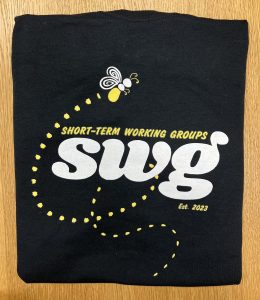
That’s how Team Space was born … and students at The University of Texas at Dallas started making space bricks.
Students in another SWG took architectural risks to create a “Gertie the Dinosaur” wood cutout that became a campus attraction. One of the participants, Mickey Dolphin, compared it to piecing together a puzzle.
The space bricks project started with the potentially puzzling question Dr. Kelli Palmer, Cecil H. and Ida Green Chair in Systems Biology Science and department head of biological sciences, posed to her SWG last summer:
How would you build sustainable infrastructure in space?
The students were intrigued. So was Palmer.
“I explained to them how bioconcrete works on Earth, and they took it from there,” she said. “There are lots of different ways to make concrete, I’m learning. I knew nothing about this coming in, and I’m learning at about the same pace as the students.”

It was a natural extension of Palmer’s research into how bacteria develop resistance to antibiotics. Instead, this SWG readily accepted its mission to figure out how microbes and bacteria could mix on the moon to form sustainable, self-repairing structures. When they are damaged, the bricks must be able to heal themselves by using hardened bacteria called endospores.
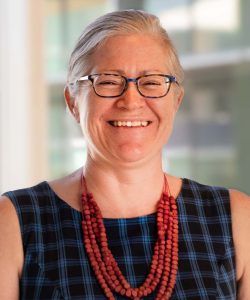
“They researched it, and they decided where they wanted to focus,” Palmer said. “They decided on the moon because you can buy fake lunar soil. I learned it all from them. They did all of it. It’s been one of the most rewarding experiences of my academic career, I have to say.”
Spend a few minutes with biomedical engineering senior Jacob Pena, and it’s easy to see why Palmer learned from the students. Here’s how Pena broke it down:
“The process of making space bricks is going to be tedious because a lot of the factors of making a brick on Earth don’t really apply in space. When we construct a brick on earth, we count on gravity being there as well as other factors, such as the ozone.
“So we’re going to have to design equipment that will account for that difference when we have to build settlements at other places. And then, on top of that, we have to account for the UV difference. We’re going to be bombarded with energy if we make bricks in space, so we have to account for the concrete’s ability to withstand the radiational experience.”
The students chose materials for the space bricks by learning more about the lunar environment – what it will require, how the lack of gravity will affect the bricks’ strength, etc.
“Say, for example, we’re on the moon and we want to build a satellite,” Pena said. “We’re not going to take the typical concrete equipment up to space with us. We’re going to have to design something new.”
It’s that sort of student expertise that excites Palmer.
“I’m getting more into the philosophy of student-led projects,” she said. “I’m here to give feedback and give training on rigor and methods and ask questions. ‘Have you considered this alternative explanation?’ You know, things like that.
“When I started my career, I was much more into driving a lot of the projects and directions that I wanted, whereas now that I’m older, I’m like, ‘What about this cool thing? Let me help you work on this.’ And then they just take it and make it something way more amazing than anything I could have ever done.”
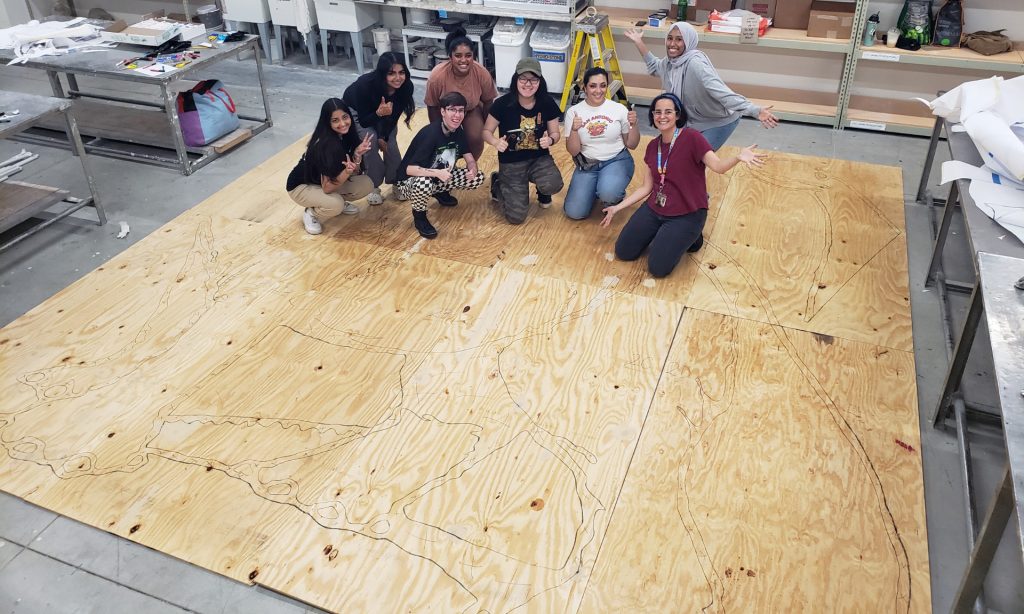
Dr. Christine Veras expressed similar sentiments about the way her SWG came together last summer to tackle the tall task of creating Gertie for the student production of “Winsor and Gertie,” an inaugural collaboration by the Harry W. Bass Jr. School of Arts, Humanities, and Technology.
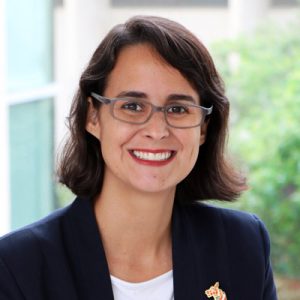
As co-producer of the play, the assistant professor of animation and games and experimenta.l. lab director wanted something spectacular to grace the University Theatre façade. A 14-foot dinosaur certainly did the job.
“It allowed me to see that students can be committed in projects that are not necessarily for a grade, which makes a huge difference, and that they want to contribute to something bigger,” said Veras, who was named the 2024 tenure-track winner of the UT Dallas President’s Teaching Excellence Award in Undergraduate Instruction. “But it also helped me discover and challenge my ability and the abilities of the students to make something out of nothing. It was just an idea, and actually realizing it in physical form – that was so important.”
There are challenges, and then there are challenges. Try these on for size:
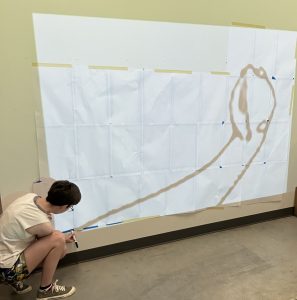
But it all was worth it once they saw the result of their efforts. Junior Nivedya Vengattery found it so enjoyable, she added art as a minor.
“It was a very casual project, but it gave me a chance to work on my team-building skills because it was an environment with people I had never met before, working on a project I would never encounter in any of my classes,” she said.
“It allowed me to feel comfortable trying new things and not have to worry about, ‘If this goes badly, it will reflect on my GPA.’ I forgot that it was associated with the school. It was just like an extracurricular activity that I got to do.”
Dolphin’s advice to students considering the SWGs:
“If you have even an inkling of wanting to do it, just do it. I hadn’t been in a woodworking shop since I was a kid – my dad was a woodworker. I hadn’t been around any of these tools in years. It was easier and more enjoyable than I expected. If you think you might be interested, just go for it. It’s only four meetings.”
****
Other stories in this series:
Part 1: Short-term Groups Transform Research Perspectives